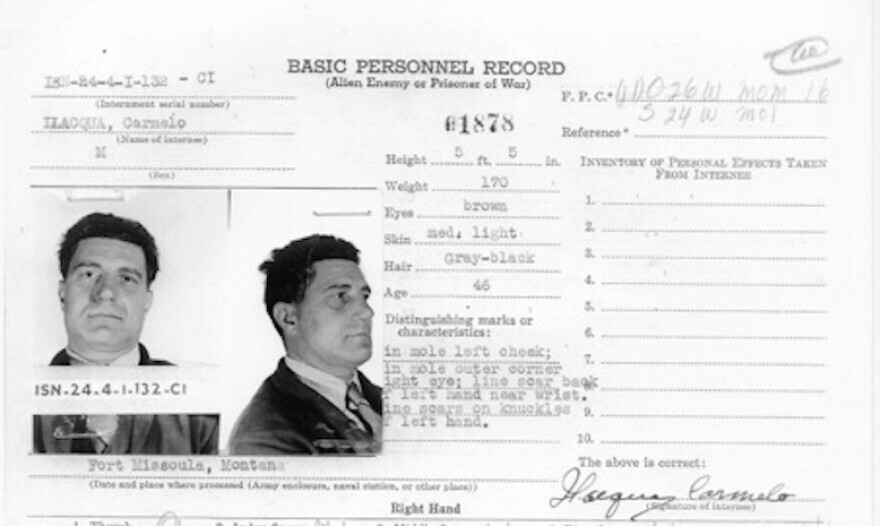Outside Reactions: Not so Different
Though Latino and Italian immigrants crossed paths throughout the Bay Area, even sharing similar institutions, one of the most remarkable similarities between the two is not the doing of either group, but rather outside reactions to their arrival. One article points out that Anglo-Americans upon the arrival of both cultures were quick to note their unique religiosity, close-knit families, and emphasis on delineated gender roles, in addition to unique loyalty to their home nations (Del Olmo, “Latinos Can Look to an Italian Legacy”). Perhaps on account of their Catholic religion, similar existence on the periphery of “White” identity, or perceived cultural similarity both Italian and Latin-American immigrants were faced with stereotypes that treated them as criminal threats and unassimilable culturally (Leonhardt, “Hispanics; The New Italians”). Political cartoons often portrayed Italian immigrants as nascent mafiosi, eager to stir up trouble and bring organized crime to the United States. Similarly, it is difficult to speak of the current immigration debate without mentioning the supposed connection between Latino immigrants and drug cartels, which some view as direct correlatives. Depictions in media often drew similar parallels, depicting both groups as foreign, hot-blooded, and culturally conservative while also violent and untrustworthy (Laurino 89).
This sentiment provokes very different reactions in the communities themselves, with some urging assimilation while others hold tighter to their individual ethnic identities. At least in some cases, instances of recognition between both groups led to stable interaction, often on account of outside prejudice which forced them together. Henry Schiro, a musician in the San Jose Jazz Society, was known for his collaboration with Mexican-American groups, especially regarding the musical education of youth and promotion of traditional music (“Henry Schiro Dies”). Additionally, founder of the Ghirardelli Chocolate Company, Domenico Ghirardelli, deliberately Hispanicized his name to Domingo after his emigration to Peru. Notably, upon his arrival in California, he maintained the Hispanicized version of his name, meaning presenting himself as familiar with Latin-American conventions carried some social clout (Dillon 11). Laura Ruberto and Joseph Sciorra also affirm the similarity in migration patterns among Mexican and Italian immigrants, remarking that it is useful to use similar paradigms analyzing both (Ruberto, Sciorra, 19). Both groups arrived principally as rural immigrants seeking labor employment, before reaching for upward mobility and finding their way into the middle class. By the 1990s, descendants of immigrants from both groups who arrived in the 1950s and 1960s had often achieved middle-class status.
Though Italian and Latino immigration to the Bay Area took variable forms, it is worth considering the similarities between both groups’ stories of migration on account of their unique migratory patterns and cultural values. Fundamentally, both groups shared space during a time of transition, when Italian Americans found themselves upwardly mobile and Latino Americans began to arrive. At the same time, Italian immigrants often collaborated with or adopted facets of the Latino community, while Latino immigrants found themselves working for or alongside Italian Americans. Both groups’ descendants continually attend similar schools, attend the same churches, and hold similar cultural values. To that end, it proves important to remember that despite groups appearing disparate from one another, the lessons learned from each history can reflect upon society as a whole.
